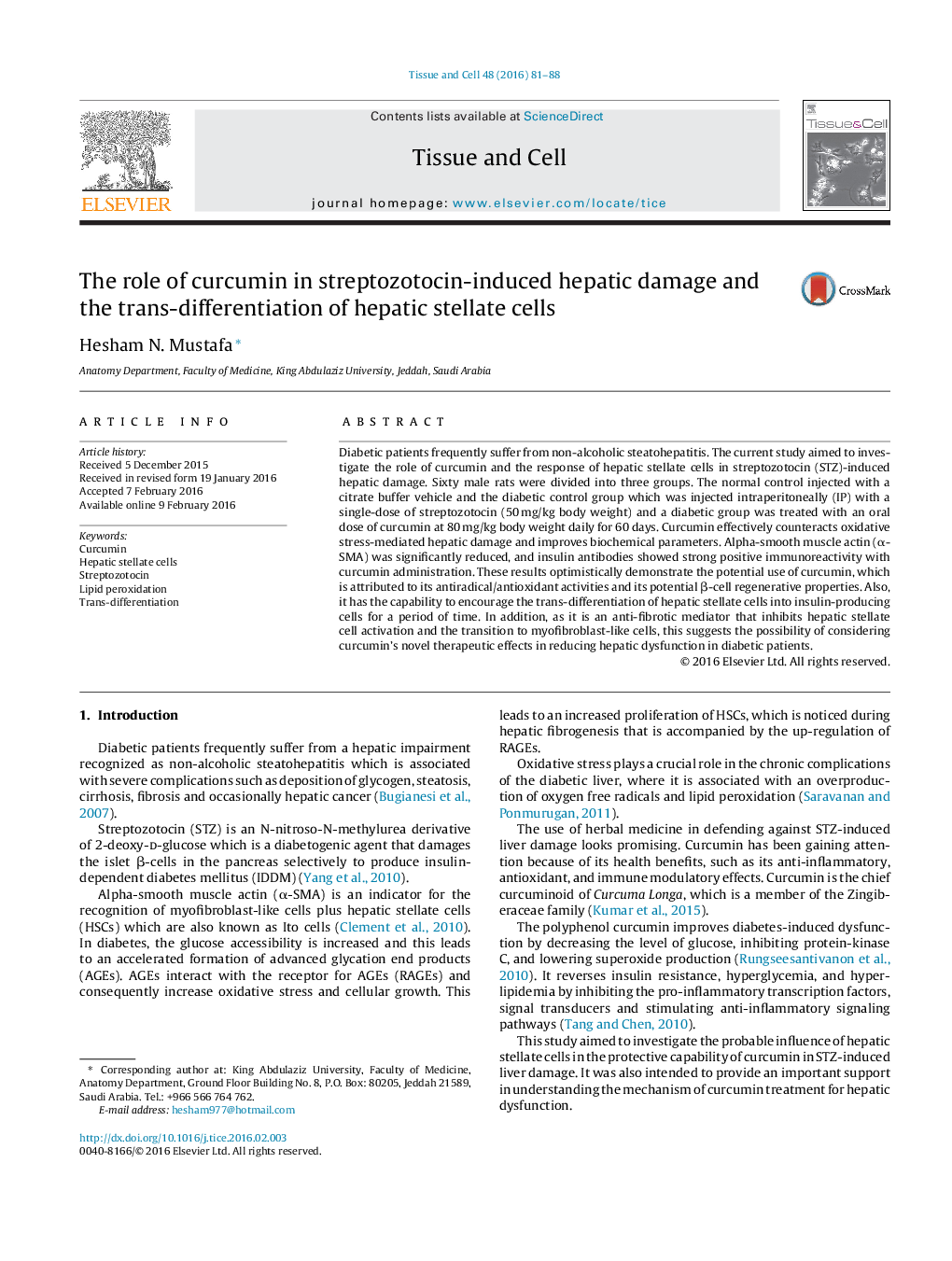| Article ID | Journal | Published Year | Pages | File Type |
|---|---|---|---|---|
| 2203516 | Tissue and Cell | 2016 | 8 Pages |
•Curcumin has antiradical/antioxidant activities and β-cell regenerative properties.•It encourages the transdifferentiation of hepatic stellate cell into insulin-producing cells.•It has an anti-fibrotic mediator by inhibiting hepatic stellate cell activation.•It encourages the transition of hepatic stellate cell into myofibroblast-like cells.•It opens the way for its novel therapeutic effects in reducing hepatic dysfunction in diabetic patients.•It plays an essential role in the key event of nonalcoholic steatohepatitis and hepatic fibrogenesis associated with diabetes.
Diabetic patients frequently suffer from non-alcoholic steatohepatitis. The current study aimed to investigate the role of curcumin and the response of hepatic stellate cells in streptozotocin (STZ)-induced hepatic damage. Sixty male rats were divided into three groups. The normal control injected with a citrate buffer vehicle and the diabetic control group which was injected intraperitoneally (IP) with a single-dose of streptozotocin (50 mg/kg body weight) and a diabetic group was treated with an oral dose of curcumin at 80 mg/kg body weight daily for 60 days. Curcumin effectively counteracts oxidative stress-mediated hepatic damage and improves biochemical parameters. Alpha-smooth muscle actin (α-SMA) was significantly reduced, and insulin antibodies showed strong positive immunoreactivity with curcumin administration. These results optimistically demonstrate the potential use of curcumin, which is attributed to its antiradical/antioxidant activities and its potential β-cell regenerative properties. Also, it has the capability to encourage the trans-differentiation of hepatic stellate cells into insulin-producing cells for a period of time. In addition, as it is an anti-fibrotic mediator that inhibits hepatic stellate cell activation and the transition to myofibroblast-like cells, this suggests the possibility of considering curcumin's novel therapeutic effects in reducing hepatic dysfunction in diabetic patients.
